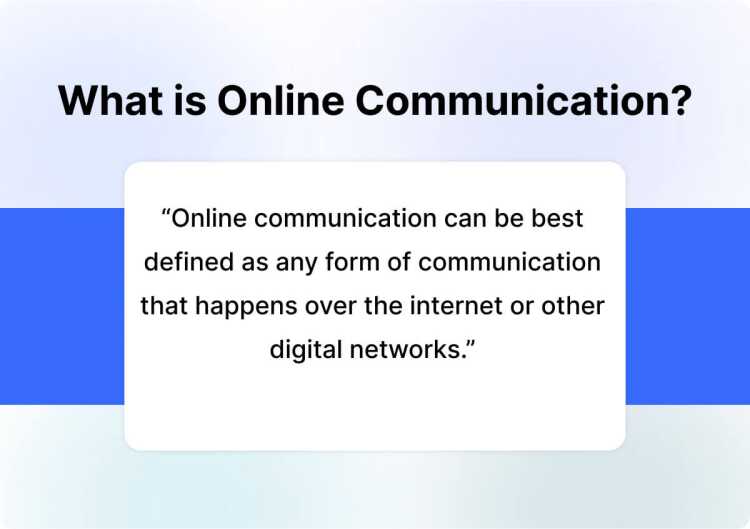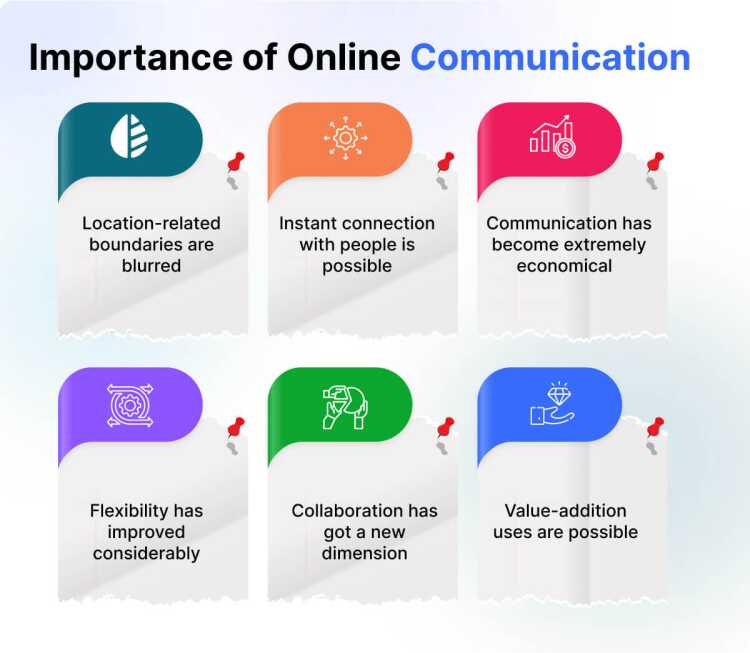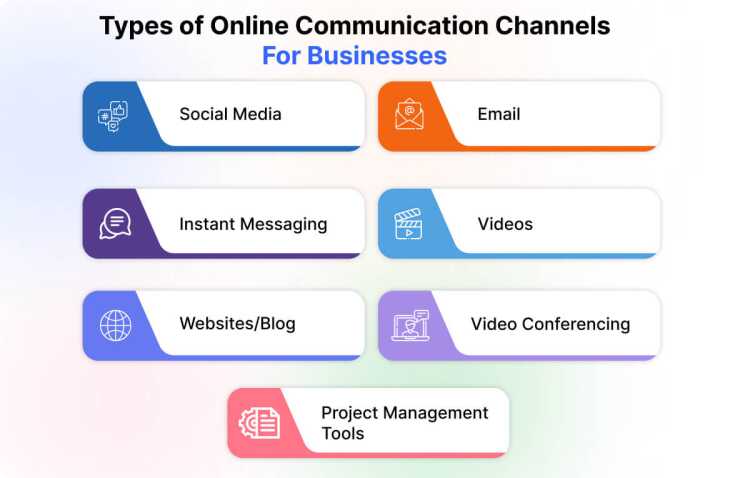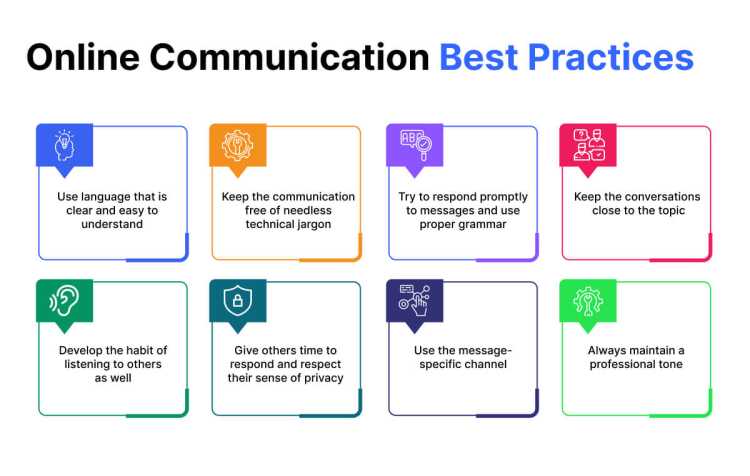It all starts with communication, goes the saying!
And if human beings were not able to communicate, the world would be a different place altogether. But thank god we do and this has hugely added to the beauty of life.
Since man is a social animal, there always lies an inclination to connect with other people around. And this penchant for interactions is at the base of all the development we see around us, not only in the field of communication but elsewhere as well.
Online communication is just an extension of the same desire, though in a different medium. And ever since the internet happened, people have been connecting, talking, engaging, and most importantly, communicating with each other.
Today, most communication happens via the internet using digital media and the world has definitely become a better place than it once was. And thanks to the ease of digital communication, everyone has gained a lot, including businesses and customers as well.
In this blog, we will explore the importance of online communication, the tools, the channels, and everything else that enables us to talk to each other over the web.
But first, let’s get started with the definition of online communication.
What is Online Communication?
Online communication can be best defined as any form of communication that happens over the internet or other digital networks. It can take many forms, right from the exchange of information to sharing of thoughts, sending and receiving of information, to connecting and engaging with individuals or groups who are either present far or near.
Thanks to the incredible advancements in technology, communication over the internet not only delivers accessibility but also the convenience of connecting with people from all parts of the globe. Email, social media, forums, video chat, live chat, etc. are just some of the popular forms of online communication that exist today.
Importance of Online Communication
The desire to stay connected with people is now a key aspect of modern society. Online communication not only supports this desire but also fuels it as well by bridging the distance gaps between people. So much so, 97% of employees believe communication has an impact on their efficiency.
The importance of online communication is huge in today’s time where digital platforms have exploded in growth.
- Location-related boundaries are blurred – Online communication has removed any location-related boundary, making people connect with others easily from any part of the world and just with a click of a button.
- Connecting with people instantly is possible – The advent of digital platforms has made communication incredibly faster compared to traditional forms, resulting in an amazing speed to the act of sending and receiving messages.
- Communication has become extremely economical – Communication is now so cost-effective that people can send messages either for free or pay just some loose change and connect anywhere over the internet.
- Flexibility has improved considerably – The internet has not only made communication easier but also extremely flexible as well, giving people a plethora of options and choices, such as video calling & video conferencing, and chatting, to connect and share ideas and thoughts.
- Collaboration has got a new dimension – The presence of varied communication tools and channels has redefined the meaning of collaboration between groups and individuals, resulting in a large-scale sharing of ideas and problem-solving.
- Value-addition uses are possible – Online communication has not only eased the process of engagement but also ensured various types of value addition as well such as transactions, learning, the conduct of business operations, etc.
Advantages and Disadvantages of Online Communication
Digital communication is now a necessity and no business can escape its huge value. Since it has made the distance boundary redundant and improved accessibility, there is no denying its value in modern times. However, there are shortcomings as well.
Advantages
- The convenience of collaboration with the need to be physically present in the same location
- Faster communication than conventional methods
- Instant sharing and receiving of information
- Real-time yet cost-effective
- Easy accessibility
Disadvantages
- Lack of personal touch that makes physical communication more effective
- Occasional incompressibility of messages due to lack of visual clues and body language
- High chances of misinterpretation, causing conflicts
- Fraught with security risks due to the threats of the web
Types of Online Communication Channels
Communication is as important for individuals as it’s for businesses. In the industry, it is essential for creating engagement and driving conversions. The good thing, businesses have a variety of channels to choose from and meet their specific needs.
Some of the popular online channels of communication for business include –
- Social Media – A growing number of businesses can use social media platforms such as Facebook, Twitter, Instagram, YouTube, LinkedIn, etc to communicate effectively with customers and all stakeholders. These social channels are also very helpful in marketing and brand promotion purposes.
- Email – Despite the emergence of diverse forms of channels, Email continues to be a vital communication tool in the business world. It’s not only economical but is also considered one of the most secure ways for business communication. Plus, there are 4 billion emailer users in the world.
- Instant Messaging – Instant messaging is a type of channel that makes communication and collaboration in real-time a breeze for businesses. Team members can stay in touch, manage remote work arrangements and contribute to the growth of the business using this important channel.
- Videos – Many businesses use well-crafted videos to communicate, engage and delight their audience and also solve their problems. To-do videos, product demos, and promotional videos are some of the most popular forms of communication tools.
- Websites/Blog – Blogs and web pages are among the best tools to create content, create awareness and engage with the audience. Many businesses use blogs and websites to communicate by sharing information and getting feedback.
- Video Conferencing – In recent years, due to COVID-driven remote work culture, no channel has proved as beneficial for teams as video conferencing has. It not only allows real-time communication and enables face-to-face collaboration as well, resulting in boundary-neutral work culture for businesses.
- Project Management Tools – Project-based tasks and business models are becoming essential, necessitating various tasks, progress tracking, and constant communication between team members. All this is achievable now due to the different project tools around.
Online Communication Best Practices
Effective communication is a key skill in the online world. And if you have that skills, you will be able to communicate well with anyone. And when you know the basics of communication, chances are you will follow the best practices as well.
Some of the best practices of online communication include –
- In online communication, you should always use language that is clear and easy to understand.
- Use simple language so that your message is easily understood by everyone.
- Keep the communication free of needless technical jargon.
- Try to respond promptly to messages and use proper grammar.
- Keep the conversations close to the topic else the real purpose of the communication might be lost
- Develop the habit of listening to others as well as this enriches the communication and ensures value to both or all the parties involved
- Give others time to respond and respect their sense of privacy
- Use the message-specific channel so that the communication is effective for everyone
- Always maintain a professional tone and be mindful of the word choices and tone you use
Different Types of Online Communication Tools
For businesses, customer communication is always the key to achieving success. From sales to marketing to support, they will need to engage with customers at different stages and help solve their problems. With different types of tools available, communicating with customers is a lot easy now than ever before.
Here are some popular types of online customer communication tools –
1. Help Desk Software
Help desk software is a popular customer communication tool to manage, respond to, and track conversations from a range of channels. It’s very helpful for collaboration and can include channels like social media, mail, chat, and phone. Popular examples of help desk software include Zendesk and Hiver.
2. Live Chat Software
The use of live chat software is growing for businesses for offering real-time support to customers and engaging them with quick communication. Using this software, communication can be done through a website, social media channels, or mobile apps. Analytics and chatbots are two of their most important features. Olark and Live Chat are two great examples of live chat software.
3. Call Center Software
The role of call center software is to help manage those customer conversations that happen over the phone. This kind of software is best suited for support and sales teams and it also comes with the feature to route calls, track performance, and integrate CRM and reporting.
4. Chatbot Software
Chatbots can be developed to simulate human conversations and interact through messaging or voice interfaces. They can respond to queries, use pre-defined responses, and help automate interactions. A business can integrate chatbot software with websites, mobile apps, and messaging platforms and do customer communication. ChatBot is a great example of chatbot software.
5. CRM software
Businesses use CRM software to manage and track customer interactions through the use of data. Personalization is the key aspect of this software and its use for creating a solid customer communication strategy is huge. Salesforce is the best example of that kind of software.
6.Video Conferencing Software
Video conferencing software is a type of computer application or platform that enables individuals or groups to conduct live, real-time video and audio meetings or conferences over the internet. Whiteboard Software solutions offer integrations with popular video conferencing platforms like Zoom, Microsoft Teams, or Google Meet.
Virtual whiteboards can be an effective tool for enhancing the visual and interactive aspects of video conferencing, making it easier to convey information, brainstorm ideas, and collaborate in a virtual environment. This allows them to present their ideas, diagrams, or sketches in real-time, adding a visual element to their discussions.
REVE Chat – An Omnichannel Online Communication Platform For Your Business
Your business can leverage REVE Chat‘s omnichannel customer communication or engagement platform to serve, engage and delight your customers at any stage of their journey. This platform can enrich your business with top features such as live chat and AI chatbot and you can serve customers promptly.
- You can engage customers across their preferred channels
- You can be where your customers are and deliver a unified service experience
- You can easily engage across channels like Facebook Messenger, and WhatsApp
- You can provide real-time support and make conversations effective
- You can stay available 24×7 with an AI chatbot and communicate at their convenience
- You can provide quick answers to FAQs without involving human personnel
- You can use data and analytics to offer personalized experiences and boost customer relationships
Top Features of the REVE Platform
Live Chat
Our live chat will help you connect with your customers in real-time and redefine the meaning of support and boost sales as well. More importantly, the live chat software will let you can manage all conversations in one place.
Chatbots
With AI-powered chatbots, you can give a new meaning to customer communication. You can engage your visitors and also automate answers to FAQs. You can also use the chatbot to automate your sales process.
Video Chat
The video chat software will help you have personalized conversations with customers. You can have face-to-face voice & video chat and change the way support is offered.
Co-browsing
You can now easily collaborate with your customers in real-time on the website or mobile apps. You can do quick communication and ensure faster resolution with the co-browsing software.
Multi-Channel
You can easily use the platform and communicate with customers across popular channels like Facebook Messenger, WhatsApp for Business, Viber, and Telegram.
Conclusion
Effective online communication is a vital element in the customer service strategy and businesses that get it right achieve their full potential.
At REVE Chat, we not only realize the significance of communication but also contribute to making it smooth for businesses big and small alike.
You can sign up with us and check out some of the powerful engagement tools that boost the value of customer communication.








